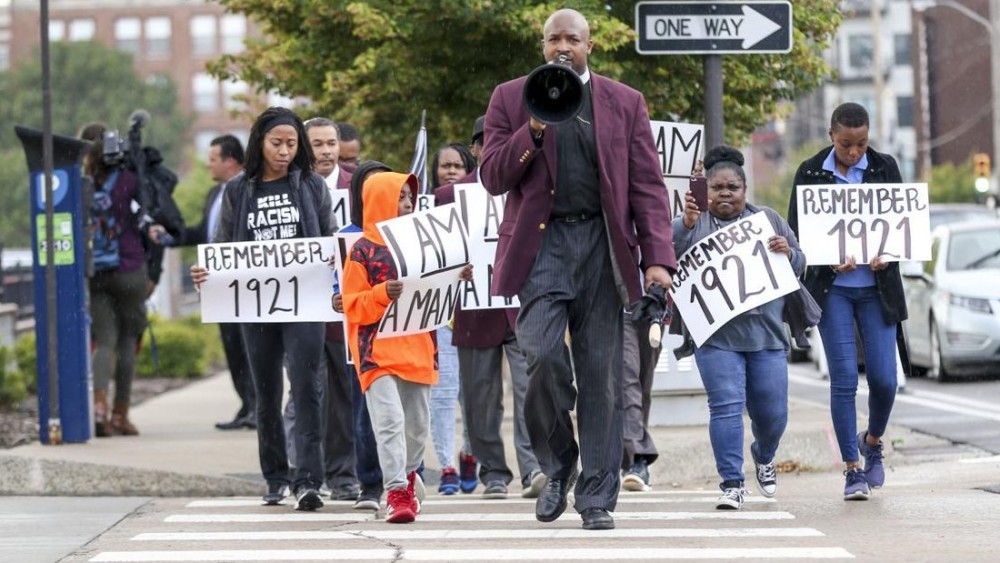100 years later, Black church leaders seek reparations for Tulsa massacre

On the first Wednesday in May, as the centennial of the Tulsa massacre approached, Robert R. A. Turner stood outside Tulsa City Hall with his megaphone, as he does every week.
“Tulsa, you will reap what you sow, and that which you have done unto the least of these my children, Jesus said, you have done also unto me,” said Turner, 38, the pastor of Historic Vernon African Methodist Episcopal Church. “We come here to say, for your own benefit, you ought to do reparations not tomorrow, not even next week, not next month, not next year, but we demand reparations now!”
Vernon AME is one of the plaintiffs in a suit filed in September 2020 that calls for the city of Tulsa, Oklahoma, and other defendants to pay reparations to relatives of victims and survivors of the May 31, 1921, massacre that destroyed a part of town known as Black Wall Street.





